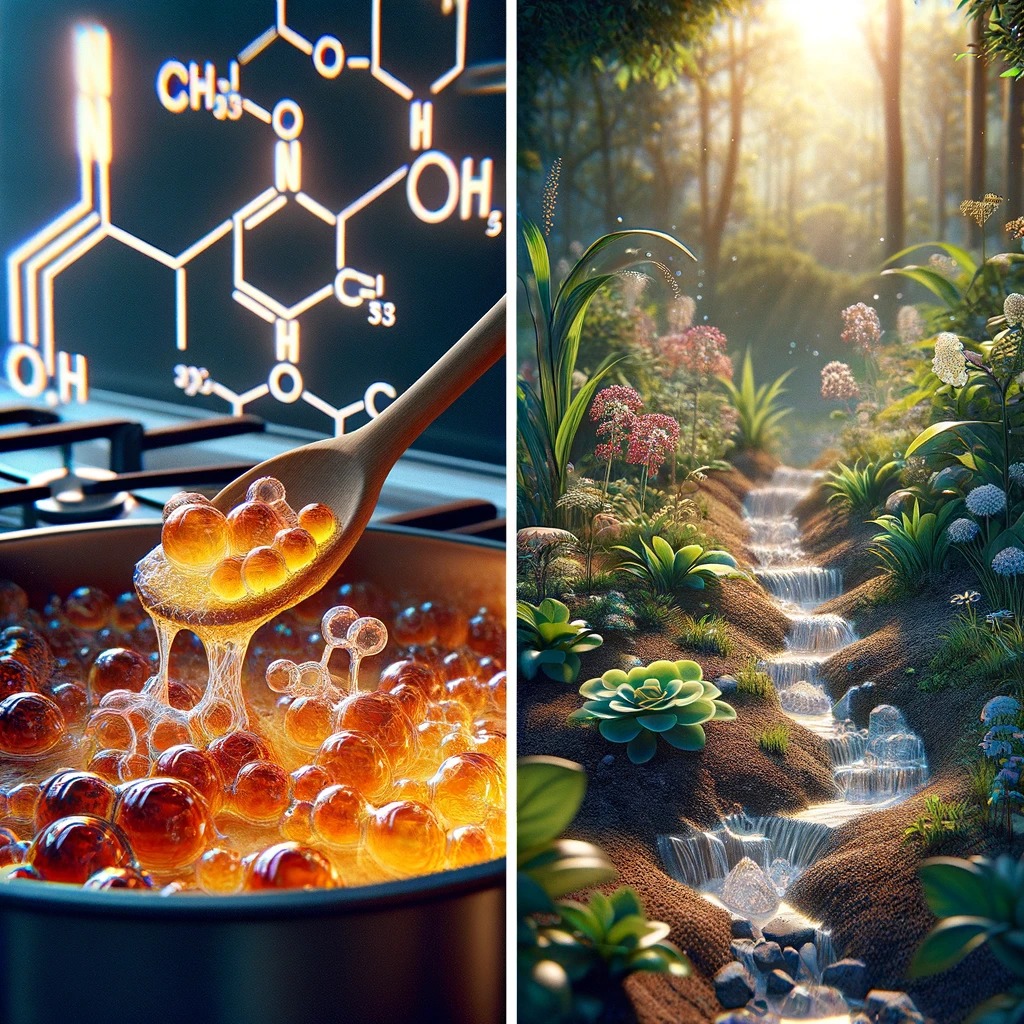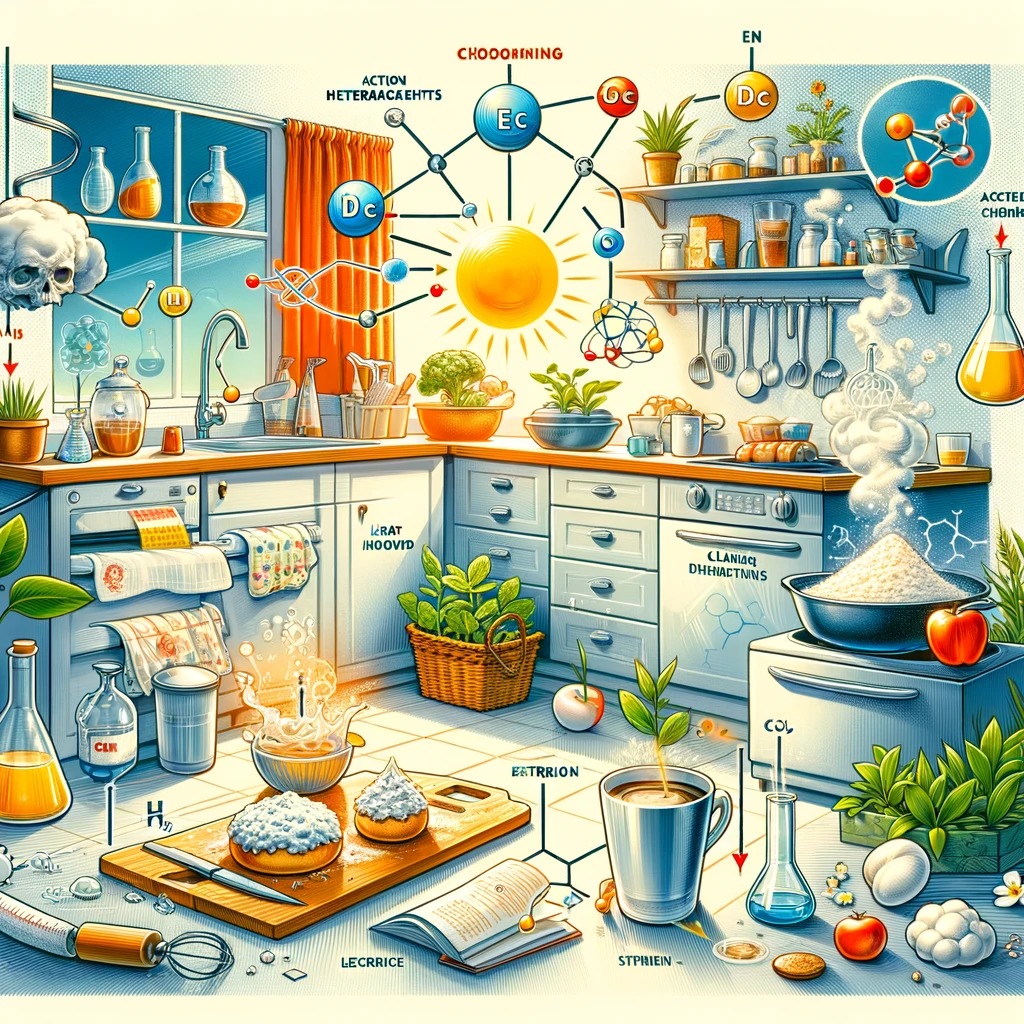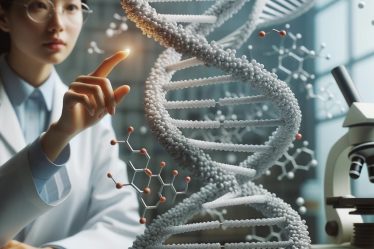
Have you ever wondered how shampoo works to keep your hair clean and healthy? Or why honey can sit on your shelf for years without spoiling? Chemistry is not just a subject in school; it’s a vital part of our daily lives. From the food we eat to the products we use, chemical reactions and processes are happening around us.
If you’re curious about how chemistry is used in everyday life or seeking ways to learn chemistry, you’re in the right place. This guide will explore these fascinating questions and more. And remember, if you find these topics challenging, tutors and private teachers are always there to offer personalized lessons and help you quickly navigate the world of chemistry.
Are you interested in other subjects? Read top free study guides for Biology, English, French, and Music.
How Does Shampoo Work to Clean and Nourish Hair?
At its core, shampoo contains substances called surfactants. These unique molecules help remove dirt, oil, and sweat from your hair. One end of a surfactant molecule is attracted to water, while the other is attracted to oil. When you apply shampoo and lather it in your hair, these surfactants work like tiny magnets. They grab onto the oil and dirt in your hair, and then, as you rinse, they are washed away with water.
Additionally, shampoos often contain conditioners and other nutrients that help keep your hair soft and healthy. This dual action of cleaning and nourishing makes shampoo an essential part of our daily hygiene routine. Understanding the chemistry behind shampoo can also make you more aware of what products are best for your hair type. If you ever need more detailed guidance, consider contacting a tutor or private teacher for a deeper dive.
Check out 8 Exciting Science Experiments for Kids and unravel The Greatest Discoveries in Biology.
How Does Honey Never Spoil? Exploring Its Eternal Shelf Life
Honey’s ability to last almost forever is a fascinating example of natural chemistry at work. The secret to honey’s long shelf life lies in its unique composition and how bees make it. Honey is primarily sugar and has very little water in its natural state. This high sugar concentration draws water out of any bacteria or microorganisms that might try to grow in it, essentially drying them out and preventing them from surviving.
Moreover, bees add an enzyme to honey that creates hydrogen peroxide, a compound known for its antibacterial properties. This addition serves as an extra line of defense against spoilage. Also, honey’s acidic nature helps inhibit the growth of other microorganisms. These factors create a substance that can stand the test of time. While honey may crystallize or change color, its chemical properties keep it from spoiling. This remarkable natural process showcases the practical and sometimes surprising ways chemistry appears in our daily lives.
Discover how Hydrogen Bonds and Covalent Bonds are formed, and learn to Differentiate Them from Ionic Bonds.
What Are the Chemical Names of Vitamins, and Why Are They Important?
Vitamins are crucial for our health, and each has a unique chemical name reflecting its structure and function. For instance, Vitamin C, known chemically as ascorbic acid, is essential for developing and repairing all body tissues. It’s involved in many body functions, including the formation of collagen, absorption of iron, and maintenance of cartilage, bones, and teeth. Vitamin D, or cholecalciferol, helps our body absorb calcium, which is vital for bone health. Vitamin E, also called tocopherol, acts as an antioxidant, helping to protect cells from damage. The B vitamins, like thiamine (Vitamin B1), riboflavin (Vitamin B2), and niacin (Vitamin B3), play key roles in energy production and red blood cell formation.
Each vitamin’s and mineral’s chemical makeup determines how it works in the body, highlighting the intricate relationship between chemistry and biology. If you’re curious to learn more about the fascinating world of vitamins and their chemical structures, a chemistry tutor or private teacher can provide more in-depth lessons and explanations.
How Do Glow Sticks Glow? Unveiling the Chemistry Behind Their Light
Glow sticks light up through chemiluminescence, producing light due to a chemical reaction. Inside a glow stick are two main components separated by a thin glass barrier: a solution of a phenyl oxalate ester and a fluorescent dye and another solution containing hydrogen peroxide. When you bend a glow stick, the glass breaks, allowing the two solutions to mix. This triggers a reaction where the hydrogen peroxide decomposes, releasing energy that excites the fluorescent dye molecules. As these excited dye molecules return to their normal state, they release energy in the form of light.
This is what gives glow sticks their distinctive glow. The light’s color depends on the dye used in the glow stick. Understanding this process is a perfect example of how chemistry creates everyday items.
The basics of Polymers and PET plastic.
Why Does Food Go Bad? Understanding the Chemistry of Food Spoilage
Food goes bad due to natural processes and the activity of bacteria and fungi. When food is exposed to air, moisture, or certain temperatures, it creates an environment where these microorganisms can grow. For example, fruits and vegetables contain enzymes that start breaking down cell walls, leading to spoilage. This process is accelerated when food is bruised or damaged.
Bacteria and fungi play a significant role, too. They thrive on the nutrients in food, and as they grow, they produce substances like acids or alcohol that can change the food’s taste, smell, and appearance. Some foods spoil faster because they are more appealing to these microorganisms, like meats and dairy products, which are high in proteins and fats.
Moreover, the oxidation of fats leads to rancidity, giving food a bad taste and smell. Oxygen in the air can react with the fat in food, changing its chemical composition. The understanding of these processes is crucial in food preservation and safety.
How Does Soap Clean? The Chemical Process of Removing Dirt
Soap cleans by acting as a mediator between water and dirt. The key to its effectiveness lies in its molecular structure. Soap molecules have two ends: a hydrophobic (water-repelling) tail and a hydrophilic (water-attracting) head. When you wash with soap and water, the hydrophobic tails attach to the oil and dirt on your skin or clothes. At the same time, the hydrophilic heads remain in the water.
This arrangement forms micelles, with the hydrophobic tails pointing inward and the hydrophilic heads pointing outward. These micelles encapsulate the dirt and oil, making them soluble in water. When you rinse, the dirt, now trapped inside the micelles, washes away with the water. This process effectively removes dirt without harming your skin or the fabric of your clothes.
The soap’s chemistry is simple and fascinating, showing how everyday items rely on fundamental chemical principles. A tutor or private teacher can offer detailed lessons and explanations.
How Does Baking Powder Make Cakes Fluffy? The Science of Rising Dough
Baking powder is a crucial ingredient in baking that causes dough and batter to rise, resulting in fluffy cakes and bread. It combines bicarbonate of soda (baking soda) and a weak acid, typically cream of tartar or sodium aluminum sulfate. When mixed with moisture, the bicarbonate of soda reacts with the acid, producing carbon dioxide gas.
This gas forms bubbles in the dough or batter, which expand when heated in the oven. As the mixture cooks, these bubbles get trapped, giving the baked goods a light and airy texture. Additionally, the heat causes proteins in the flour and eggs to set, stabilizing the structure and preventing the gas from escaping.
Don’t forget to read our blog post, where we explain how respiration works.
What Are the Effects of Drugs on the Body? Unraveling the Chemical Impact
Drugs, whether medicinal or recreational, have significant effects on the body due to their chemical properties. These substances interact with the body’s biochemistry, altering normal bodily functions. For example, painkillers like ibuprofen work by blocking the production of chemicals called prostaglandins, which signal pain and inflammation in the body.
Antidepressants, such as selective serotonin reuptake inhibitors (SSRIs), increase levels of serotonin in the brain, a neurotransmitter that affects mood, emotion, and sleep. On the other hand, recreational drugs like cocaine stimulate the nervous system, leading to increased energy and euphoria, primarily due to the heightened release and reduced reuptake of neurotransmitters like dopamine.
Each drug’s specific molecular structure determines how it interacts with various receptors and enzymes in the body, leading to its unique effects. The study of these interactions is crucial in pharmacology and medical treatment. If you want to explore how different drugs affect the body at a molecular level, chemistry tutoring can provide deeper insights and a better understanding of this complex topic.
How Does Caffeine Affect the Brain? The Neurochemical Processes
Caffeine, a common stimulant found in coffee, tea, and many soft drinks, affects the brain by interacting with a neurotransmitter called adenosine. Normally, adenosine binds to receptors in the brain, slowing down brain activity and making you feel sleepy. Caffeine, due to its similar structure to adenosine, competes for these receptors. However, unlike adenosine, it doesn’t slow the brain’s activity. Instead, it blocks adenosine’s effect, increasing alertness and wakefulness.
Additionally, caffeine stimulates the release of other neurotransmitters like dopamine and norepinephrine, which enhance focus, concentration, and energy levels. This combination of blocking adenosine and stimulating other neurotransmitters gives caffeine an energy-boosting effect.
Over time, the brain responds to regular caffeine intake by producing more adenosine receptors, which can lead to tolerance and dependence.
Read all about the polymerase chain reaction or PCR.
Why Do Onions Make Us Cry? The Chemical Reaction Explained
The tear-inducing effect of onions is due to a chemical reaction that occurs when they are cut. Onions contain compounds called amino acid sulfoxides. When you chop an onion, you damage its cells, releasing these compounds. They then react with the air and enzymes in the onion to produce a volatile gas called syn-propanethial-S-oxide.
When this gas reaches your eyes, it reacts with the water in your tears to form sulfuric acid. This acid irritates the eyes, making them sting and producing more tears in an attempt to wash the irritant away. It’s a defense mechanism of the onion, deterring pests from eating it.
While it may be a nuisance in the kitchen, this reaction is a fascinating example of how chemical compounds can interact with our bodies. To learn more about such chemical reactions and their effects, consider engaging with a tutor or attending chemistry classes for a more in-depth understanding.
How to calculate Molar Mass, Mass Fraction, and Viscosity?
How to Learn Chemistry Effectively
Learning chemistry can be both fascinating and challenging. Whether you’re a student or just curious about the subject, there are many ways to explore this intriguing science.
Resources Such as Free Educative Blogs and Online Materials
- Online Blogs and Websites: Offer articles and explanations suitable for all learning levels, from beginners to advanced.
- Video Tutorials: Visual and auditory learning through online videos covering various chemistry topics.
- Interactive Resources: Simulations and quizzes to enhance understanding and engagement.
Importance of Tutors, Tutoring, Private Teachers, and Lessons
- Personalized Learning: Tutors provide lessons tailored to individual needs, interests, and difficulty levels.
- Deeper Understanding: Tutors can offer in-depth explanations and guide through complex topics.
- Question and Answer Support: Allows clarifying doubts and better-grasping concepts.
- Preparation for Exams: Targeted help for school chemistry and exam preparation.
If you need a chemistry tutor, you can search for “chemistry tutor Liverpool” or “chemistry teacher Edinburgh” on the tutoring platform of your choice, such as meet’n’learn, and find a teacher who suits your requirements.
For those who enjoy learning in groups, you can look for “chemistry classes Leeds” or “chemistry lessons London” on the internet and find out about local schools that offer chemistry lessons.
Exploring the World of Chemistry in Everyday Life
Chemistry is a fascinating and vital field that touches every aspect of our lives, from the food to the products we use daily. Through this exploration of everyday chemistry, we’ve seen how understanding chemical processes can demystify the world.
Remember, learning chemistry is continuous, and numerous resources and support systems are available to aid you in this journey. So, keep your curiosity alive, seek out knowledge, and do not hesitate to reach out to tutors or teachers for a more personalized learning experience. Embrace the wonders of chemistry and discover how it shapes our world and our understanding of it.
Read more topics and expand your chemistry horizons! Our World of Chemistry offers a plethora of free educational blogs.
References:
1. ThoughtCO
2. Allrecipes
3. Britannica



